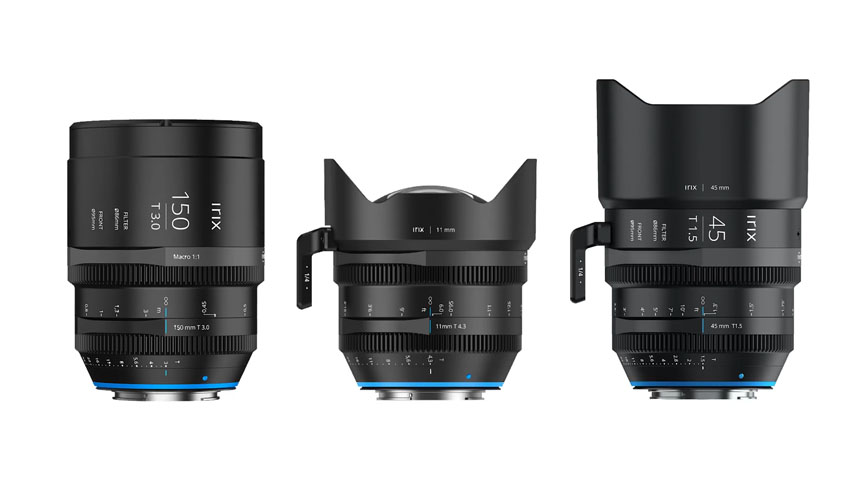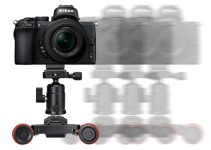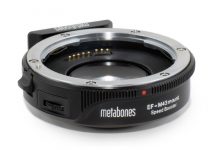You mean you don’t know? It’s ok to admit it. For the last decade, stills lenses have been used far more for video and independent film productions than cine lenses.
But prior to the advent of DSLR video, cinema lenses were made exclusively for mostly PL mount film cameras, video lenses were made for B4 lens mounts for broadcast cameras, and Canon EF / Nikon F-Mount lenses were exclusively for stills cameras. Each system was designed with its own specific uses in mind, and the differences in the optics of the lenses were related to the size of the imager.
Now that these systems have merged, you really begin to wonder if a cine lens is more professional than or optically superior to its stills counterpart. Let’s clear up some confusion with a look at the fundamental distinction between these two lens body variations.
Dave McKeegan will provide the visuals and entertainment, and I’ll be backing it up with a breakdown and my own 2 cents.
Cine lenses look pretty damn cool. We’re all used to seeing them on giant camera rigs with all kinds of wires and connections from behind the scenes photos of our favorite movies. Even though they look pretty next level, there is virtually no optical difference between a cine lens and a still lens.
Obviously, there are different manufacturers, qualities, and variations (like Anamorphic glass) that are only available in cine lenses but these lenses resolve images the exact same basic way stills lenses do. The reasons why these lenses look different, have larger bodies, and have bodies made of metal revolve around how and where they are used.
Let’s breakdown the differences between stills and cine lenses, looking at a lens system that is sold as a stills version and also a cine version.
Aperture Control
Still lenses are made with electronic couplings that allow the aperture to be controlled with a dial on the camera body. This suits how photographers traditionally hold a camera, but this also enables the camera’s processors to control the aperture for auto-exposure settings.
Cine lenses have fully manual, geared aperture rings that are de-clicked to provide smooth exposure adjustments while filming. This is useful when the team is completing a camera movement that requires it to move from area to another with a different look, and also lets you dial in a precise exposure since you aren’t limited to half and quarter stops.
While we’re on the topic of apertures, there is also another aperture difference.
Aperture Measurements
You probably noticed that the aperture measurements of still lenses are different than cine lenses. Still lenses are rated in f-stops which is determined by the focal length of the lens divided by the diameter of the back element. This does not take into account other factors which can diminish light transmission.
Cine lenses are measured in T-stops, however, which are a measurement of the actual amount of light that comes out the rear of the lens, not just an equation as with stills lenses.
Because t-stops is a measurement of actual light transmission, a t-stop setting would be consistent across all cine lenses.
Cine lenses are all about consistency so settings can be reproduced exactly, and the operation of film production can move quickly.
Lens Body

Consistency is the underlying principal of a cine lens line, and it is most noticeable in the design of the lens bodies themselves. The focus and aperture gears on cine lenses are always placed at the exact same distance from the lens mount meaning that the cine rig with follow focus motors and other accessories doesn’t have to be fully reconfigured between lens changes.
The front end of the cine lens body is either 95mm or 114mm to fit to a standard matte box clamp. Still lenses use screw threads to attach filters which vary in sizes from lens to lens. Interestingly, these Irix Cine lenses have both options!
Markings on the Barrel
Still lenses are designed to be used by one operator, the photographer, and as such the lens markings are on the top of the barrel where they could see them from behind.
Since cine lenses are designed to be used by a team, lens markings are consistent and on both sides of the barrel so they are visible on the left for the camera operator and also on the right for the 1st AC.
Build Quality
Cine lenses are built like tanks to withstand the day-to-day wear and tear of a fast-paced film set and as such are usually housed in metal bodies. Still lenses are designed to be carried around by a photographer and mobility is key. They are constructed out of plastics and composite materials, weather-sealed, and coated with rubber for added grip – they tend to get pretty messed up after a few years of video production.
Coatings
Cine lenses are also coated with special lens coatings to give them a consistent color across the entire range from a manufacturer. This is done so you don’t have to waste time and money adjusting colors to match shots in the same scene.
Though stills lens makers are generally consistent with their lens designs, these lenses weren’t designed with cross-cutting video footage in mind and because of this there can be minor color inconsistencies between them when using still lenses to film a narrative scene. It usually isn’t a big deal, but it’s one-of-those-thing demanding, big budget projects require.
Conclusion
Aside from the iconic look of Cooke cine lenses, there is virtually no way to tell if a project was shot using a cine lens or a stills lens. A lens is a lens.
Build quality, and usability are the main reason to shoot with a cine version of a lens over its stills counterpart. If you’re having issues pulling focus or rigging your camera, give cine lenses a shot. There are a lot of great options from Sigma, Irix, Xeen, and many others that are coming to market with prices falling fast.
The added cost for cine lenses has more to do with their limited production runs, and not with the quality of the final image you shoot.
[source: Dave McKeegan]
Disclaimer: As an Amazon Associate partner and participant in B&H and Adorama Affiliate programmes, we earn a small comission from each purchase made through the affiliate links listed above at no additional cost to you.
Claim your copy of DAVINCI RESOLVE - SIMPLIFIED COURSE with 50% off! Get Instant Access!




